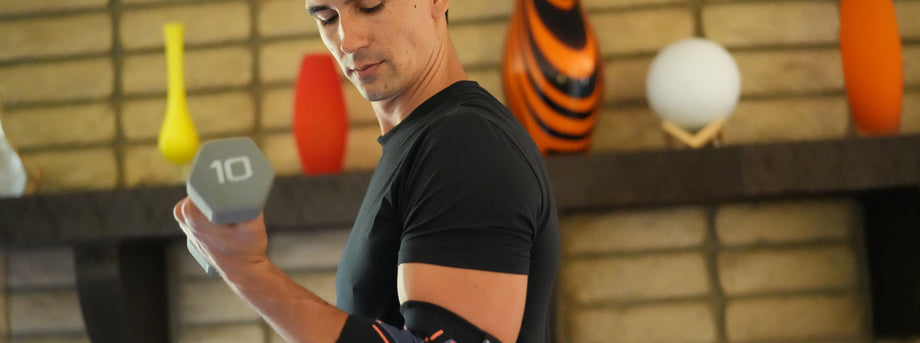
The elbow joint is utilized in so many everyday activities that is no surprise that elbow pain is such a common occurrence. According to the Mayo Clinic, most elbow pain is caused by overuse in sports, hobbies, and jobs.
Not all elbow pain will benefit from the use of an elbow brace, but the garment is effective in a wide range of conditions and situations.
Who Will Benefit from an Elbow Brace?
The following conditions and situations can reap the benefits of wearing an elbow brace:

Tendonitis. The most common cause of elbow pain is tendonitis, or inflammation of the tendons in the elbow joint. You may recognize this condition by the terms tennis elbow (pain in the outside of the elbow) and golfer’s elbow (pain on the inside of the elbow.) Both terms are names for the same condition of tendonitis, just with pain occurring in different areas of the elbow joint. Tendonitis usually occurs from overuse of the joint from repeated motions like swinging a racquet, swinging a golf club, lifting objects, and even continually moving a computer mouse.
Elbow Injury. If you have seriously injured any of the muscles, bones, or tendons that connect to the elbow joint, an elbow brace could provide some support. While the injury heals, an elbow brace can provide stability in the arm and joint.
Arthritis. Arthritis is another painful condition related to inflammation. An elbow brace can help ease symptoms by providing proper support and improving circulation to the affected area.
How to Wear an Elbow Brace Properly

A few simple steps will ensure you get the proper elbow brace and fit to ease your elbow pain.
- Measure arm circumference. The first step to wearing an elbow brace effectively is determining the size. Measure your forearm 1 inch (2.5 cm) below your elbow joint. Compare that measurement to the brace’s sizing options to identify the best brace size for your arm.
- Choose a washable brace. You will likely be sweating and transferring skin oils to this elbow brace daily. It is super important to find a brace that has washable fabric, including the foam padding. Clean the brace regularly to prevent skin irritation.
- Clean your skin. Just like the brace, make sure to clean your skin before putting the brace on. Excess oil, lotions, perfumes, and dirt can cause skin irritation where the brace rubs.
- Adjust brace for comfort and stability. Most braces will come with adjustable straps. You will need to experiment to find the proper tightness for your arm. You want the brace to be snug enough that it won’t move around, but not so tight that it cuts off blood circulation.
